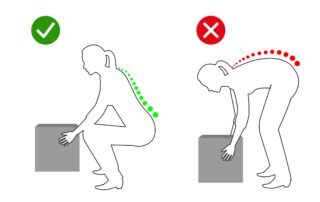Water Bottle Blues?
The biggest issue inside water bottles of any kind (metal or plastic) is the buildup of biofilm — that is when bacteria establish protective colonies inside your bottle. The closest parallel is plaque on teeth. Biofilms are impervious [...]
Can You Explain It to a Fifth Grader?
Richard Feynman, the late physicist who received a Nobel Prize for his work in quantum physics, made a contribution to learning by asking fellow scientists to explain concepts in simple words to test their own grasp of [...]
Why Recite What You Read?
Looking away and reciting what is read from memory has benefits established many years ago. Per the book Make It Stick: A large-scale research program published findings in 1917 showing that "children in grades 3, 5, 6, and 8 studied [...]
Legacy Strategies for Better Indoor Air — And a New One: Proximity Air Cleaning (PAC)
According to the US EPA, there are three main ways to protect IAQ. They are, in order of importance: Source Control: That is, eliminate or control the source of pollution. Ventilation: Bring in fresh and exhaust stale air (goal: five [...]
What is ICM?
Integrated Cleaning and Measurement (ICM) is an open-source system in which best practices are defined by scientific measurement of cleaning outcomes. Why is measurement a main component of ICM? The professionalism of the cleaning industry with resulting positive impacts on [...]
Evidence-based Cleaning for Health (EB-CFH) for Healthier Spaced-based Outcomes
Evidence-based Cleaning for Health is research into and measurement of cleaning processes and results to enable higher-quality and healthier spaced-based outcomes. Since room-related environmental factors (e.g., ventilation, non-cleaning-related pollutants indoors) are as important as cleaning, EB-CFH is linked to [...]
Ask a Powerful Question: How Clean is Clean?
According to executive coach John Mattone: “A powerful question can clarify purpose and fuel passion. Thus, it can help in solving problems, gaining direction, and leveraging focus.” One such question is, “How Clean is Clean?” It prompts related questions: [...]
“Clean Safe, Work Comfortable” – Ergonomics of Cleaning
by UMass Lowell TURI How we move, sit, twist, lift, stand and perform other everyday motions and tasks affects how we all feel on a day-to-day basis. Sometimes performing routine tasks and movements in a way that puts strain on [...]
ATP Uncovered – A Q&A With Robert W. Powitz, PhD
Q: How has ATP-measurement technology progressed, and what relevance does it have to cleaning for healthier indoor spaces? A: The many technological advancements to the luminometer and the stability of the reactive enzymes and swabbing system have made ATP monitoring [...]
Mopping Ergonomics – “Studies Say…”
Dr. Gary Allread, a member of our General Council and Ohio State University ergonomics expert, shared a 2018 study by the Human Factors and Ergonomics Society — “An Overview of Strategies for Reducing Upper Extremity Physical Exposure Associated with Floor [...]
Categories
- AI
- All Posts
- Building Biology
- Carpet
- Citizen Science
- Cleaning
- Cleaning for Health
- COVID-19
- Ergonomics
- Floor Safety
- Foodservice
- Great Stories
- Green Cleaning
- Grocery and Retail
- Handwashing
- Hygienic Green Cleaning
- ICM
- Indoor Air Quality
- Infection Prevention
- Internet of Things (IoT)
- Kaizen
- Lean
- Learning
- Opinion
- Per Dr. Michael Berry
- Process Proctoring
- Professional Learning Communities
- Questions
- Recycling
- REDTalks
- Research
- Resilient and Hard Flooring
- Respect
- Restrooms
- Self-Esteem
- Success
- Sustainability
- Systems
- The Edge of Cleaning
- Training











